
If someone from ten years ago told me that I would one day be able to find Junji Ito merchandise at even some of the biggest chain stores, I might not have believed them. Even now, I’m astounded each time I enter my car and see the Tomie air freshener that my niece got me. The fact that Ito-san’s work has recently earned its newfound popularity is both exciting and long overdue, but popularity in the media world also means that the looming criticism from dedicated fans will be ready to pounce the second something doesn’t live up to their expectations. I am of course making reference to The Junji Ito Collection, which received mostly unfavorable reactions from fans across the globe.
While I personally wouldn’t call that series bad, it did miss the mark for me more often than not, depending on the episode in question. The general consensus was that the animation just wasn’t up to par with what fans are used to seeing from Ito’s own pen. Now, with Junji Ito Maniac: Japanese Tales of the Macabre, Studio Deen collaborated with Netflix to take on the task of continuing the attempt at animating the beautifully grotesque imagery that fans hold in such high regard and are responsible for the aforementioned popularity that has developed over the last couple of years.
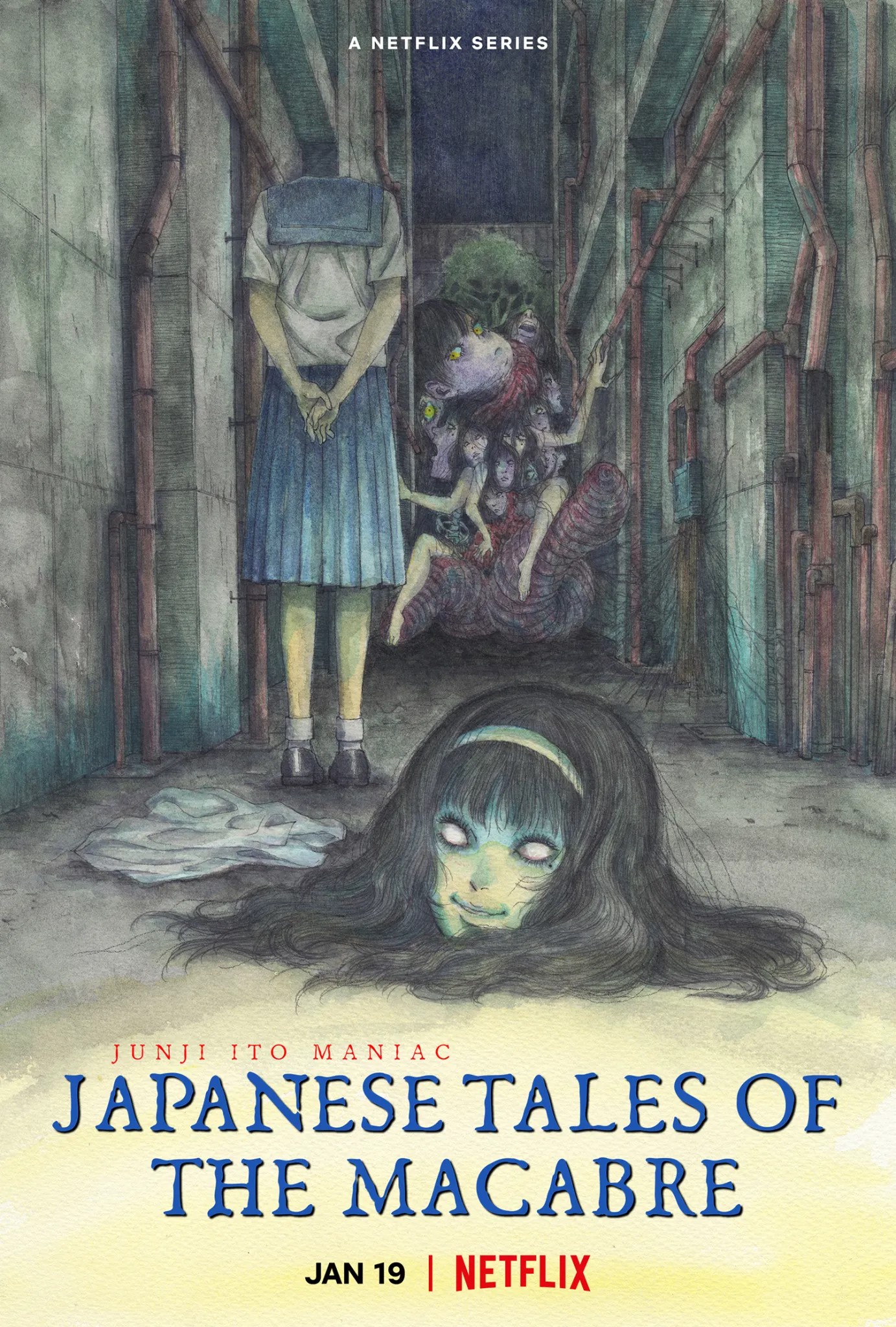
The series begins on a rather playful note—similar to how The Junji Ito Collection did with its Souichi episode premiere—with the possibly lesser-known story called The Strange Hikizuri Siblings. Right off the bat, the animation looks much more polished this time around, with shadows appropriately obscuring parts of the character’s faces as opposed to having solid colorization. The story, while indeed strange, leans more towards the comedic side, with its characters—reminiscent of The Addams Family—exhibiting their kooky behaviors along with a goofy brass-based score. After this initial episode, the series moves forward with a number of fairly solid adaptations, most notably The Story of the Mysterious Tunnel and the more well-known Hanging Balloons.
Both of these stories have exceptional pacing and pertinent atmosphere, with the latter of the two even utilizing digital animation to bring the titular smiling floating heads that begin to attack the people of Tokyo to life. Although many people are opposed to CGI animation—Hayao Miyazaki for example—I felt that it worked perfectly for this particular story, adding a pinch of uncanny valley quality against the regular 2D animation. The humorous tone makes a quick comeback with another Souichi episode, hindering the proliferated “macabre” flavor of the episodes that came before it, but the following episode puts the series back on track, with contentious results.
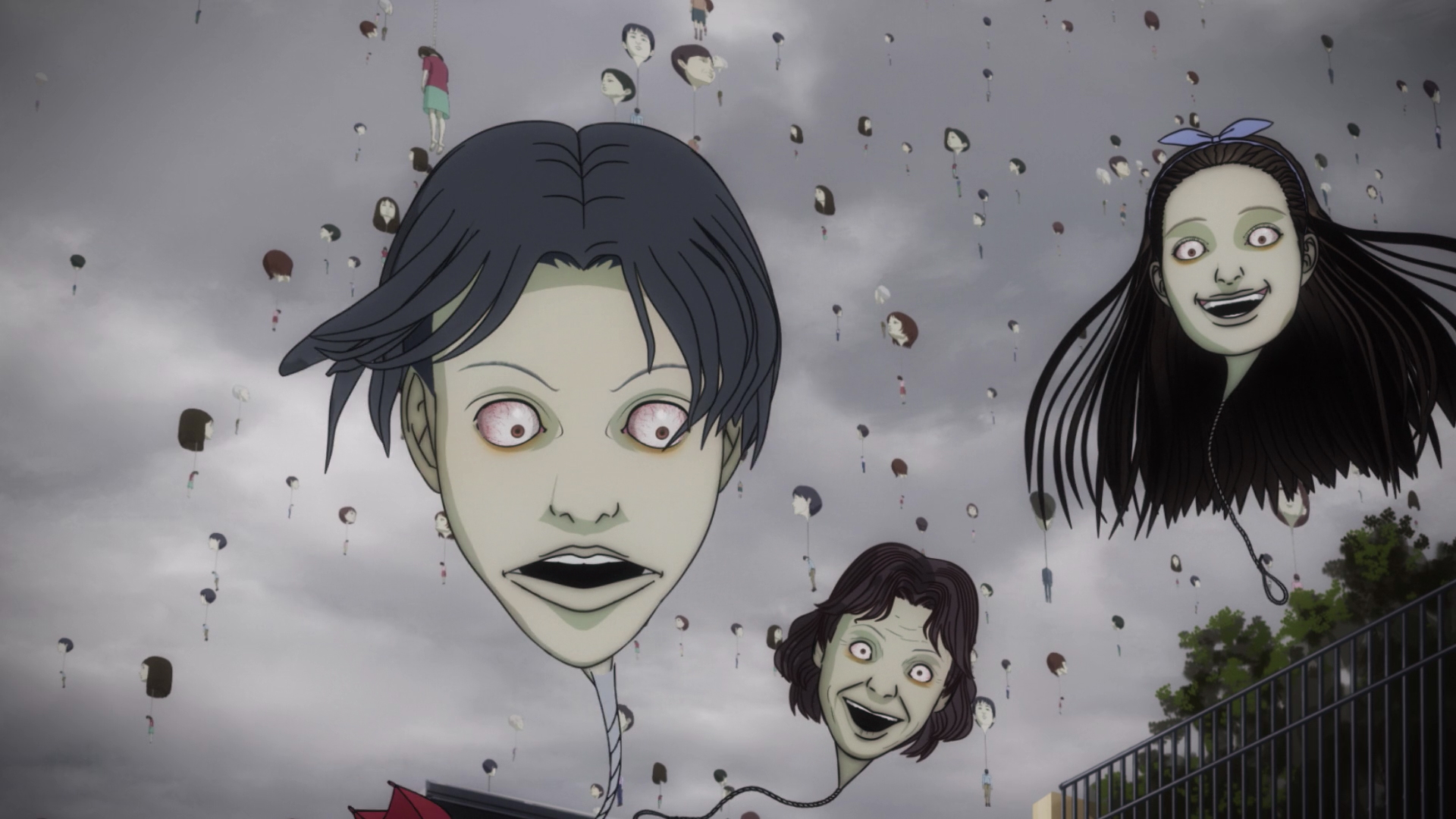
The Sandman’s Lair is a story that could have benefited from better pacing and more attentive animation. The comic version of this story is quite short indeed, but the episode seems to want to rush through it as quickly as possible, which is an issue I had for a number of episodes in The Junji Ito Collection. For all I know—and I’m certainly not familiar with how anime productions run—it could be an issue with budget restrictions or even time restrictions that resulted in this execution. I wonder how different the end result would have been had they shortened the series by removing half the episodes and really fleshed out the ones they chose to keep while lengthening the animation for the more grotesque scenes to really make them stand out.
The following two episodes, containing two stories each, are a bit of a drag compared to the ones that came before them. Library Vision, specifically, is much more effective on paper versus animation, leaving much to be desired due to its reliance on narration rather than visuals. Fortunately, episode 7 livens things up with Tomb Town, which tells an engaging story about two siblings who find themselves in an unforeseen predicament after hitting a young girl with their car and finding themselves in a town that is overrun by random tombs, some of which even blocking the roads. My engagement dwindled by the end of the episode due to the goofy execution of one particular scene—meant to invoke fear but echoing a sillier tone akin to some of the previous episodes instead.
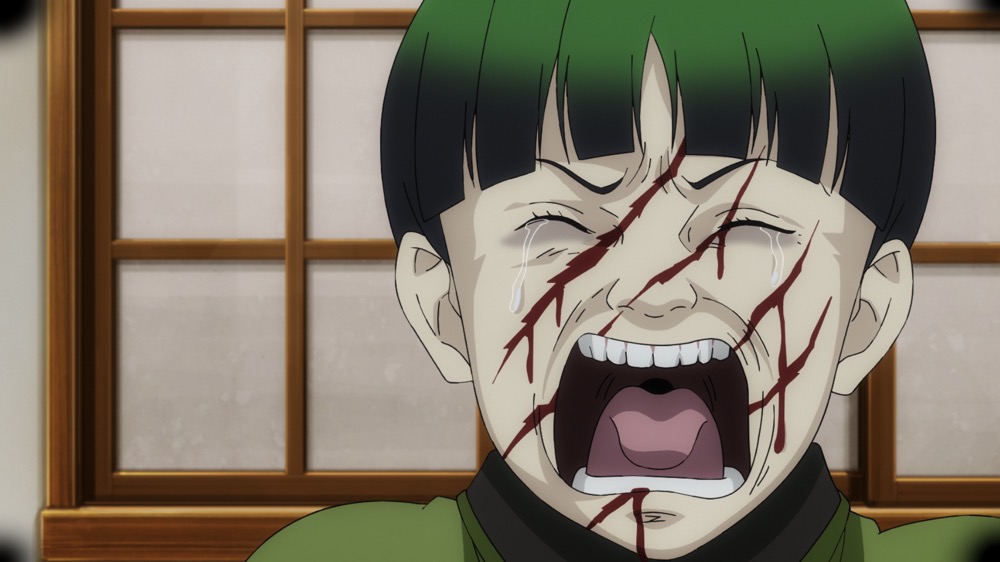
The episode I was most looking forward to was Photo, featuring perhaps one of Ito-san’s most popular characters—and my personal favorite—Tomie. This particular character has already been portrayed numerous times on film, with varying results, but I always believed that live-action could never fully live up to the unsightly transformations that the character is known for. With that said—and after watching the full episode—it appears that animation also has yet to live up to the character’s full potential, even though this adaptation specifically is faithful to the source material. And to be fair, all of the episodes are technically faithful, with only very minimal changes here and there. Why, then, did I feel underwhelmed when the final episode ended?
While Junji Ito Maniac: Japanese Tales of the Macabre is definitely a slight improvement from the previous Collection, it was ultimately just more of the same in terms of execution and structure. I’ve seen many people state that Ito’s art is just too hard to translate into animation, but I personally reject that sentiment. There are dozens of anime that have elevated their manga counterparts to high degrees, so I don’t believe it is impossible to produce something that will please a larger percentage of the fan base. As the saying goes, you can’t please everyone, but at the very least, this series could serve as a solid introduction to the world of Junji Ito for anyone who isn’t already familiar. I should have been a better audience for this series, but unfortunately, my expectations for a Junji Ito project clouded my ability to fully connect with it. I’m just glad that Ito-san has finally gained the popularity that he deserves!
Junji Ito Maniac: Japanese Tales of the Macabre is now available to stream on Netflix worldwide.
More Anime Reviews
While I’m only four episodes in so far, Wonder Egg Priority is my favorite anime of this season, and perhaps the last several years. Has a worthy successor to Madoka… Sometimes love makes you crazy, and sometimes makes you want to stab someone right in the middle of their chest. Just as the Japanese term defines it, a “yandere” is… When it comes to horror subgenres, body horror is, by far, the most impressive visually – the loss of bodily autonomy in the most horrendous and intimate way. As such,… Anime opening and ending songs are often the presentations for whatever show you want to watch for the first time. They try to convey the tone and themes that the… Here at Yurei, we have brought the search for Saki Sanobashi to our audience’s attention many times. Unfortunately, until now, it hasn’t been productive at all. We have discussed how… It is an undeniable fact that some horror fans also can be huge softies. We enjoy our healthy dose of gore, scares, and violence, but we are not dead inside….Wonder Egg Priority (2021) Anime Insight – You Have to Crack a Few Along The Way
Top 7 Yandere Anime Characters That Are Not Yuno Gasai
11 Best Body Horror Anime Of The 80s & 90s – A Vessel For Visceral Visuals
Top 10 Deceitful Opening and Ending Songs for Unusually Dark and Disturbing Anime
[April Fools] Chimamire no Gakuen (1988): We found the Saki Sanobashi Sequel!
Natsume’s Book of Friends (2008) Anime Review – A Wholesome Horror

Your typical ghoul next door; film enthusiast, horror fanatic, J-horror nerd, aspiring horror host, and all around geek. Will likely be found cuddling with their cat and reading an old smelly book, or stuffing their face with popcorn at the cinema!
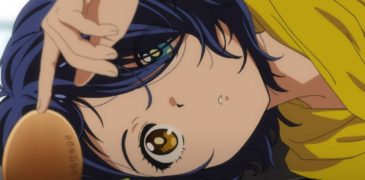

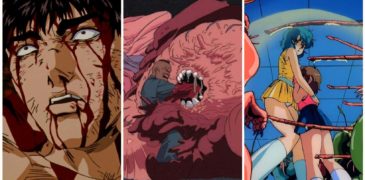

![[April Fools] Chimamire no Gakuen (1988): We found the Saki Sanobashi Sequel!](https://www.grimoireofhorror.com/wp-content/uploads/2024/03/sasA-365x180.jpg)
